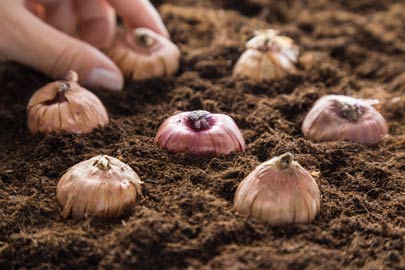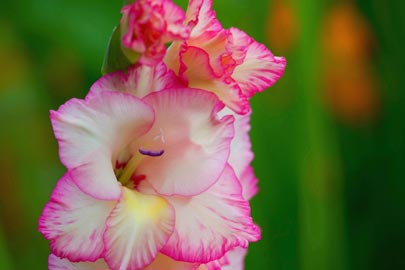 Gladiolus
Gladiolus
© Thinkstock
Gladioli make such good cut flowers that they’ve long been a flower of choice in funeral bouquets. While that's useful, it's not a great marketing angle for a flower that otherwise is one of the showiest, cheeriest bloomers in the mid-summer garden. "Glads," as they’re commonly called, produce spiky flower clusters on 3- to 4-foot- tall stalks that open from the bottom up. They come in just about every color option from pale pink to screaming orange (except for blue).
 Gladiolus corms
Gladiolus corms
© Thinkstock
How to grow glads
Glads grow from hard, disc-like "corms" that function like more familiar flower bulbs but are actually swollen plant stems that grow underground. In the North, plant corms pointed end up a week or two before the usual last spring frost and three to four times as deep as their diameter. A full-sun location is best. Fertilize once the shoots are up and again as the flowers begin to open. Keep the soil damp since dry soil stunts growth.
Be sure to stake the flower spikes because the weight of those flowers can cause the spikes to tilt. Cut a few spikes for bouquets just as the first few flowers are opening. The rest will open shortly in the vase.
In the South (Zones 7 and warmer), glads grow as perennials. Cut them to the ground in fall, make sure the bed is covered with 2 inches of mulch, and watch for new shoots to appear in spring.
 Gladiolus close up
Gladiolus close up
© Thinkstock
Maximizing your glad return
Extend your glad time by planting corms every two weeks through June instead of all at once. To keep corms from freezing over winter in the North, dig them after fall frost browns the foliage. Cut off the shoots, shake soil off the corms, and let them air-dry in a warm location for three weeks. Then separate and toss this year’s spent corm, and store the younger ones around the perimeter in a mesh bag over winter, ideally in a cool, dry location. A few species, such as Gladiolus nanus, are winter-hardy to Zone 5.